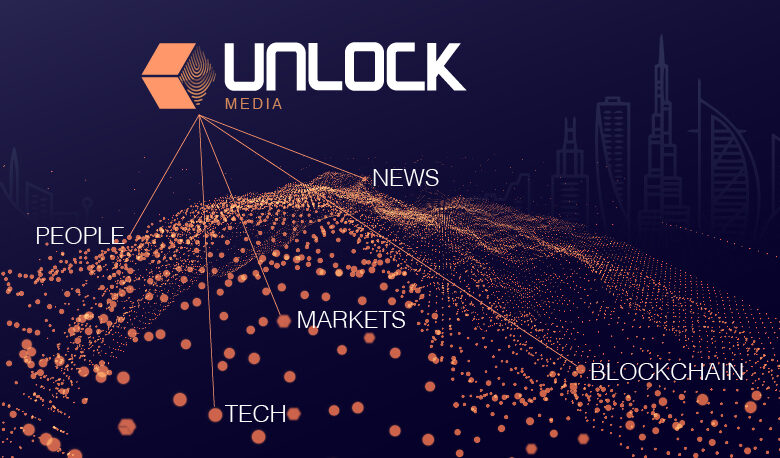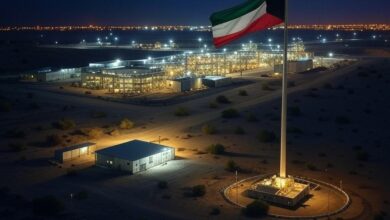What every utility CEO should know about blockchain

Bitcoin has attracted wide interest in recent months, but it’s blockchain—the technology that underpins bitcoin and other cryptocurrencies—that has the potential to remake important aspects of the utility industry. Leading utilities have begun to ask how they could take advantage of these uses while withstanding threats from blockchain-enabled challengers. The emergence of blockchain introduces a new measure of uncertainty at a time when the industry is changing rapidly due to renewable and distributed energy, energy efficiency, energy storage, and digitization.
Blockchain technology could provide the infrastructure for sophisticated networks that manage payments, sales, trading, and distribution. Given their potential to streamline transactions and cut costs, blockchains and smart contracts could help to remove pain points and friction throughout the power value chain. That said, blockchain technologies are still in their infancy, and questions remain about security, scalability, and governance.
We look at six ways that energy players are beginning to use these technologies, and we consider the prospects for blockchain’s development within the industry.
1. Issue and trade renewable-energy certificates
Renewable energy certificates (RECs) are currently given to solar producers based on generation estimates and forecasts rather than on actual generation. Inaccuracies could be reduced using sensors paired with smart contracts that record data to a blockchain ledger and issue or trade RECs based on actual energy produced. There is no need for a central agency to verify generation data or work through costly and inaccurate estimates because accurate data is instantly viewable and actionable on the secure ledger. Blockchain can reduce costs for public agencies administering RECs by streamlining trade verification and data indexing.
Companies such as Volt Markets (an energy origination, tracking, and trading platform powered by smart contracts on the Ethereum blockchain), solar-panel designer Ideo CoLab, sensor maker Filament, and exchange operator Nasdaq are experimenting with services that allow power generators and others to sell certificates arising from energy generation. Ideo CoLab, for example, has integrated its capabilities with Nasdaq’s Linq platform as well as Filament’s hardware—which uses digital sensors with blockchain capabilities—to issue RECs to producers for each kWH their solar panels generate, enabling even small solar producers to easily track, prove, and trade power.
2. Enable peer-to-peer power generation and distribution through microgrids
Blockchain technology’s relatively low transaction costs allow smaller energy producers to sell excess energy, thereby increasing competition and grid efficiency. Smart contracts facilitate the real-time coordination of production data from solar panels and other installations, and execute sales contracts that allow for two-way energy flows throughout the network.
The State of New York, for example, is working to rebuild its power grid as a distributed platform, leveraging a framework that allows power companies and new entrants to collaborate. Start-up LO3 is using the Ethereum blockchain to allow consumers to buy power either directly from local producers or from a microgrid that sits on existing infrastructure. Brooklyn Microgrid, a project supported by LO3 and Siemens, is working to create such a microgrid in the New York City borough of Brooklyn (Exhibit 2). Blockchain-enabled metering allows power to be exchanged between members of the microgrid without a centralized authority or expensive infrastructure to manage flows. Members can control their energy-use preferences with a mobile app or smart-home system; their blockchain meters will purchase energy from solar owners based on preset cost preferences.
3. Electrify undeveloped markets
Many regions around the world have limited access to energy. Blockchains, combined with smart financing schemes, mobile applications, and digital sensors, can help distribute energy in small, discrete packets in these regions, allowing a local owner of a solar-generation system to sell power to neighbors. The solar-system owner installs a blockchain-enabled solar panel on credit from the installer, using a mobile phone to pay for the hardware in installments and incurring minimal fees. Once the solar installation is paid for, the owner can sell small, discrete amounts of solar power to nearby consumers as they need energy. Power requests and payments can be made via mobile phone. The lighter fixed infrastructure involved with blockchain and mobile micropayments allows these networks to thrive where other infrastructure—wires, traditional loan structures, and centralized energy authorities, for example—would be too cumbersome.
In one pioneering social initiative, the crowd-funding platform Usizo connected to blockchain-enabled smart meters in underfunded South African schools so that donors can pay the school’s electricity bills. Blockchain-based payments allow donors to ensure that 100 percent of each donation is used for its intended purpose. Similar methods can be used to provide electricity to new or underserved markets. M-PAYG, a Danish company, provides prepaid solar-energy systems to people living below the poverty line in developing markets and is leading a major project to electrify Uganda’s largest refugee camp.
For the power industry, the result is more individuals with power access and an increasing number of microgrids to support the main grid infrastructure. Owners of small solar-generation systems gain access to new income streams.
4. Enable real-time transactions to balance supply and demand
As solar and wind energy scale, power markets are increasingly challenged to balance supply and demand. Power supply was once provided by mostly “on call” or dispatchable sources of energy, such as coal and gas generation. In many markets, power supply varies with the wind and the sunshine. This has created demand for new “flexibility” services, to either adjust power demand to better match supply, or compensate backup sources of supply that can respond quickly in times of shortage.
The Northern European transmission-system operator TenneT has launched pilots in Germany and the Netherlands to use blockchain technology to provide such flexibility services to the grid. TenneT’s pilots integrate storage assets, from electric cars and household batteries, into power markets.
UK-based Electron is using blockchain to develop a platform for a flexibility marketplace, to allow real-time transactions to balance power supply and demand. This has been dubbed an “energy eBay,” as it opens up participation in power markets. The trading platform would compensate consumers for adjusting their energy consumption, encouraging higher consumption in periods of high renewable power supply and lower consumption in periods of relatively low supply. It allows power generators and storage providers to transact in response to real-time price signals.
The flexibility marketplace leverages a blockchain-based asset register that Electron has been developing over the past two years. The register does not require a central coordinator and aims to ultimately allow for direct transactions between all included assets, such as smart-home technologies.
5. Manage infrastructure in real time
Blockchain can enable more efficient monitoring and maintenance of power-industry infrastructure, based on secure, real-time data communicated by sensors. If an anomaly is detected, maintenance can be facilitated and paid for by smart contracts, leading to faster response times. Data is secure because it is only available to nodes in the blockchain network. Again, blockchain adds a layer of security and coordination to current digital pilots, enabling quick, accurate data gathering and communication between hardware suppliers, utility maintenance, and emergency response teams.
6. Connect electric-vehicle charging stations
In transport, blockchain offers opportunities to coordinate electric-vehicle (EV) charging. Blockchain facilitates energy payments at charging stations, allowing EV drivers to view maps of the charging network that highlight choices based on each user’s preference and real-time pricing data. If blockchain microgrids have been set up in the area, power prices at each station can be established by grid and residential power suppliers. Drivers can pay securely and instantly using a blockchain wallet.
By facilitating a larger and more efficient charging network, blockchain can catalyze faster adoption of electric vehicles. Blockchain coordinates the charging-station network autonomously, showing drivers where nearby stations are located and how they are being used (Exhibit 3). Smart contracts allow for automatic, secure, peer-to-peer energy payments. In Germany, Share&Charge is an app based on Ethereum technology that connects electric cars with available residential and commercial charging stations and facilitates payments. The technology has also been piloted in California using eMotorwerks’ JuiceBox EV chargers.
The future is uncertain, but some are taking a lead
For utilities, blockchain is a double-edged sword. New challengers can use blockchain to displace incumbents, but incumbents that use blockchain wisely stand to realize substantial benefits. By applying blockchain to their vast stores of data, utilities can unlock new revenue streams from better-coordinated markets, “smarter” hardware, and wider electrification. And all of this activity will depend on solving some of the problems that could prevent blockchain technology from being used at scale (see sidebar, “Overcoming early hurdles”).
Many utilities have started to assess the potential of blockchain technology to create both internal and industry-wide efficiencies. Some have gone a step further and launched pilots in such areas as trading, distribution, and data management. Europe has emerged as the leading region for blockchain innovation, with companies launching a range of initiatives. RWE is piloting an electric- vehicle charging-station network based on smart contracts, while Vattenfall has launched a pilot peer-to-peer energy-trading network. In Asia, energy manager and power-marketing company Eneres is partnering with Aizu Laboratory to launch a peer-to-peer network. Development in the United States has tended to be led by players outside the power industry, including the Department of Energy.
Blockchains enable “trustless” transactions ruled by incorruptible algorithms and free of intermediaries, governments, and industry watchdogs. There are not yet consistent, coordinated rules for markets based on the technology, but standard-setting efforts are ramping up. The Energy Web Foundation (EWF), for example, which comprises 24 affiliates around the world, is working with regulators and technology providers to catalyze technological and regulatory advances. EWF’s goal is to support development and create open-source blockchains with common standards and features specific to the energy industry. Additionally, energy-specific forums, such as China’s Wanxiang Blockchain labs and Endesa Blockchain labs, host summits and challenges aimed at helping standardize processes and catalyze solutions.
Even in this initial phase of commercial pilots, there is clear potential for blockchain technology to catalyze current disruptions transforming the power industry. Equally clear is that some stakeholders will benefit, others will see their business models change, and others could lose out. Among the former group are likely to be consumers, owners of solar-generation systems, microgrid participants, electric-vehicle owners, and others whose energy use involves the Internet of Things. Utilities and equipment and device makers may see their roles evolve, while the impact on exchanges, information providers, and administrators may be more disruptive as they are replaced by automated processes.
As the technological playing field takes shape, a diverse range of opportunities should appear for power-industry participants. For companies taking a medium-term view, that means acting now to put in place the strategic tools to respond to blockchain. Utilities should consider how it might create either a competitive advantage or risk of disintermediation. Utilities that participate in collaborative blockchain consortia and understand the risks and opportunities of the technology will be better prepared to act when the time is right.





